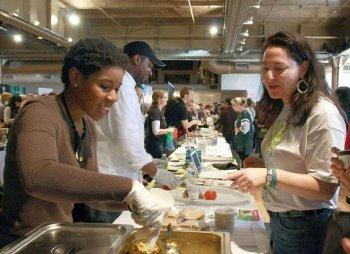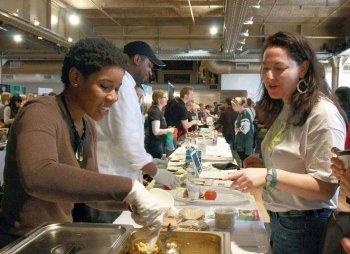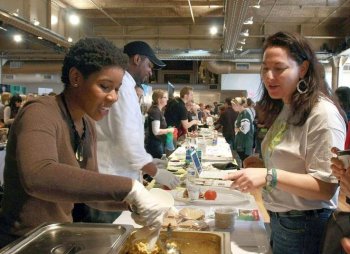Vegetarians, Flexitarians, and Vegans Converge on NYC
The inaugural NYC Vegetarian Food Festival drew hundreds of vegetarians, vegans, and omnivores who simply enjoy a good meatless dish to the Altman Building in Gramercy Park on Sunday.

Tara Duncan of IEatGrass.com serves up 'mac and cheese' at the NYC Vegetarian Food Festival on Sunday. The 'cheese' in this vegan-friendly dish is actually made from nutritional yeast. Tara MacIsaac/The Epoch Times
|Updated:






